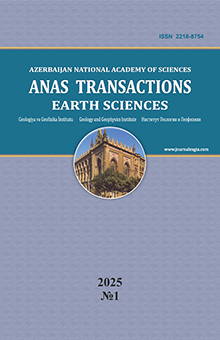Possibilities of integrated use of non-destructive testing methods in order to take into account the scale effect when studying the capacitive space of fractured reservoirs
Galkin S.V.1, Gurbanov V.Sh.2, Коlycheva N.Yu.3, Kazymov K.P.4, Osovetskiy B.M.4
1 Perm National Research Polytechnic University
2 Ministry of Science and Education of the Republic of Azerbaijan, Oil and Gas Institute
3 OOO «MIP-Prognoz-RNM»
4 Perm State University
Summary
Clay-carbonate rocks of the Kashiro-Verei age of one of the regions of the Volga-Ural oil and gas region are considered as an object of research. The possibility of studying reservoirs by X-ray tomography of a full-sized and standard core in conjunction with the use of electron microscopy has been scientifically substantiated. As a result of comprehensive studies, lithological types of rocks have been identified that differ in the structure of the capacitive space. The representativeness of various lithotypes in the volume of rocks was quantified based on the data of studies of a full-size core. A joint analysis of the results of standard core tomography and electron microscopy made it possible to examine the structure of the pore space and the development of microfracturing processes at a detailed level. It is concluded that the considered type of development object is characterized by a void space, through which fluid filtration is potentially possible. The conducted studies made it possible to more reliably assess the prospects for the use of enhanced oil recovery methods, primarily hydraulic fracturing technology.
Keywords: carbonate reservoirs, core tomography, electron microscopy, fracture, heterogeneity
REFERENCES
Mahanta B., Vishal V., Ranjith P.G., Singh T.N. An insight into pore-network models of high-temperature heat-treated sandstones using computed tomography. Journal of Natural Gas Science and Engineering, Vol. 77, 2020, 103227.
Ketova Yu., Galkin S., Kolychev I. Evaluation and X-Ray tomography analysis of super-absorbent polymer for water management in high salinity mature reservoirs. Journal of Petroleum Science and Engineering, 196, 2021,107998.
Schmitt M., Halisch M., Müller C., Fernandes C.P. Classification and quantification of pore shapes in sandstone reservoir rocks. Solid Earth, Vol. 7, 2016, pp. 285-300.
Yang S.-Q., Yang Z., Jing H.-W., Xu T. Fracture evolution mechanism of hollow sandstone under conventional triaxial compression by X-ray micro-CT observations and three-dimensional numerical simulations. International Journal of Solids and Structures, Vol. 190, 2020, pp.156-180.
Martyushev D.A., Galkin S.V., Shelepov V.V. The influence of the rock stress state on matrix and fracture permeability under conditions of various lithofacial zones of the tournaisian-fammenian oil fields in the upper Kama region. Moscow University Geology Bulletin, Vol. 74(6), 2019, pp. 573-581.
DOI: 10.33677/ggianasconf20230300020
